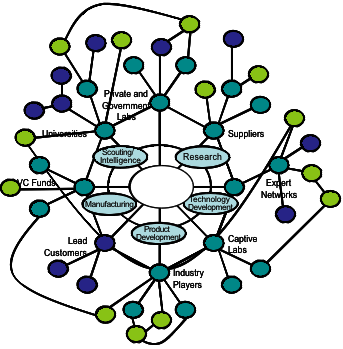Why NFT Support, dApp Connectors, and True Multi‑Chain Are Non‑Negotiable in Modern Wallets
Whoa! I’ve been noodling on wallets a lot lately. The space moves fast, and honestly, somethin’ about the current crop still bugs me. Medium wallets claim “multi‑chain” like it’s a badge, but when you dig in you find gaps in NFT handling, fragile dApp connectors, and confusing UX that costs users gas and confidence. My instinct said: there’s room for something that actually treats NFTs, dApps, and chains as first‑class citizens — not afterthoughts that get bolted on.
Really? Yes. Here’s the thing. NFTs are not just JPEGs. They are on‑chain tokens with metadata, IPFS links, and sometimes fragile provenance that breaks if a wallet treats them superficially. The long view matters: if your wallet flakes on metadata resolution or can’t manage token approvals cleanly, you risk losing access or making costly mistakes down the line, which is exactly what this audience is trying to avoid.
Whoa—pause. Initially I thought wallets only needed to be secure and simple, but then I realized that composability is security too. If a wallet can’t safely connect to dApps across chains, users will make manual errors. Actually, wait—let me rephrase that: a clunky connector is a security hazard in practice, even if the underlying key storage is ironclad. On one hand, seed phrase safety is foundational; on the other hand, seamless, clear dApp interactions reduce dangerous human choices.
Seriously? Yeah. Let me tell you a quick story—short and real. Last year I watched a friend approve an NFT marketplace contract without checking the allowance settings. He basically allowed the contract to move tokens broadly. It was a UX failure. He was careful, but the wallet presented the approval in a confusing way. That experience shaped how I evaluate wallets now: clarity beats cleverness when money is at stake.

What real NFT support looks like
Whoa! Not all NFT support is created equal. Some wallets simply list tokens by contract, which is fine for balances but rough for provenance and media. Medium complexity matters: proper support includes full metadata parsing, IPFS and Arweave fallback, on‑chain traits, and the ability to display provenance history without making the user jump through hoops. Also, gas estimation for NFT transfers should be context aware, because moving ERC‑721 vs ERC‑1155 often has very different costs.
Okay, so check this out—there are edge cases. For instance, lazy‑minted assets store only a pointer until purchase, so a wallet that blindly queries standard endpoints will show blank items. My gut says wallets should proactively resolve lazy mints and warn users when metadata is off‑chain-only. This is especially true for collectors who want guaranteed ownership records, not somethin’ that could disappear if a central server goes offline.
On the technical side, a good wallet implements token standard recognition and provides actionable buttons: view origin, check artist signature, and share verifiable metadata. Longer thought: because NFTs increasingly interoperate with DeFi and gaming, the wallet should offer contextual actions—stake, lend, or list—while keeping the approval model explicit and reversible where possible, given smart contract limitations.
dApp connectors: the gatekeepers of user intent
Hmm… connectors are deceptively important. They mediate intent between user and smart contract. If a connector obscures the exact call or lumps multiple approvals into one ambiguous prompt, people make mistakes. Seriously, UX here equals security about 70% of the time. When unclear prompts lead to blanket approvals, that’s on the connector UI and the wallet’s permissions model.
Initially I thought WalletConnect and browser injected providers solved this, but then I tested on several chains and found inconsistent behavior. WalletConnect v2 helped, yet RPC routing and chain namespace mismatches still confuse dApps. On one hand, you want a universal connector; though actually, universal connectors need to be opinionated about safety to prevent scams that exploit permissive allowances.
Here’s a practical checklist that matters: explicit contract call translation (human‑readable), granular allowance controls, transaction simulation previews, and a clear revoke path. The long view: these features reduce blind trust and empower users to make safer choices without needing to understand all the EVM internals.
Multi‑chain: not just many chains, but many realities
Whoa! People throw “multi‑chain” around like it’s a feature flag. But multi‑chain reality means handling differing RPC reliabilities, fee tokens, chain IDs, and idiosyncratic gas behaviors. Medium complexity note: some chains have faster finality; some require special mempool parameters; others have exotic fee token mechanics. A wallet that treats chains homogeneously will leak surprises.
Okay, so check this out—real multi‑chain support includes network health checks, dynamic fee estimation per chain, and user education baked into the flow. Also, autoprompting to switch networks must be explicit and confirm intent, because auto-switch can be exploited by phishing dApps to nudge users into signing transactions they didn’t mean to.
Longer thought: smart chain management should decouple account keys from chain configuration so users can safely interact across EVM-compatible and non‑EVM chains, yet maintain consistent approval semantics and a single source of truth for token ownership across ledgers, which is hard but crucial for cross‑chain composability.
Why I recommend wallets that get these three right
Whoa! I’m biased, but I favor wallets that treat NFT display, dApp connectors, and multi‑chain plumbing as integrated features. Medium evidence: my own workflows involve swapping NFT collateral across chains, using dApps for fractionalization, and bridging assets, which requires a single interface you can trust. The integrated approach reduces context switching and the chance of making expensive mistakes.
I’ll be honest—no wallet is perfect. There are tradeoffs in UX and decentralization. But a wallet that actively reduces cognitive load and surfaces the right details at the right time wins for everyday users who are not full‑time devs. On one hand, heavy security models can be overwhelming; on the other hand, soft security that hides details is worse.
Check this out—if you’re shopping for a practical multi‑chain wallet that understands NFTs and dApp connectivity, try a wallet that demonstrates these strengths in real usage. For a wallet I’ve been experimenting with that aligns with these principles, consider truts wallet which handles NFT metadata, has modern dApp connectors, and exposes chain controls without overwhelming the user.
FAQ
How does a wallet safely manage NFT approvals?
Short answer: by being explicit. Wallets should show exact contract functions, the scope of allowance, expiration if any, and provide easy revocation. Medium explanation: look for wallets that let you approve specific token IDs or limit spending amounts, and that simulate contract calls so you can see potential outcomes. Longer nuance: because smart contracts vary, the wallet should parse ABIs or use safe defaults and flag any non‑standard behaviors, while offering a clear path to revoke permissions onchain or via the UI.
Are dApp connectors safe to use?
Mm—mostly yes, if implemented well. Use connectors that require user confirmation for every high‑risk action and that provide readable summaries of what will happen. Also, prefer wallets that integrate with reputational services and show the dApp origin clearly. If a connector auto‑approves or hides details, treat it as risky.


